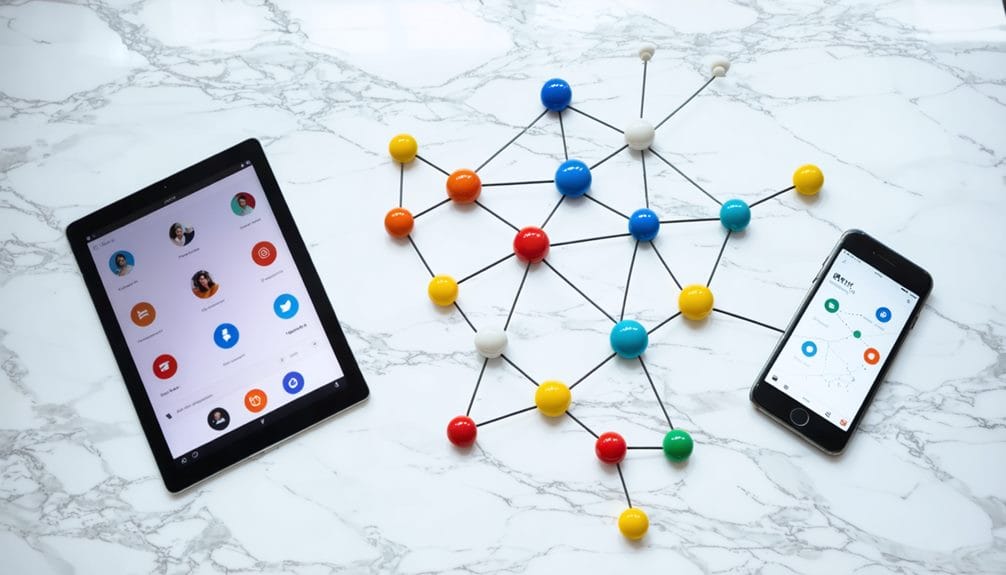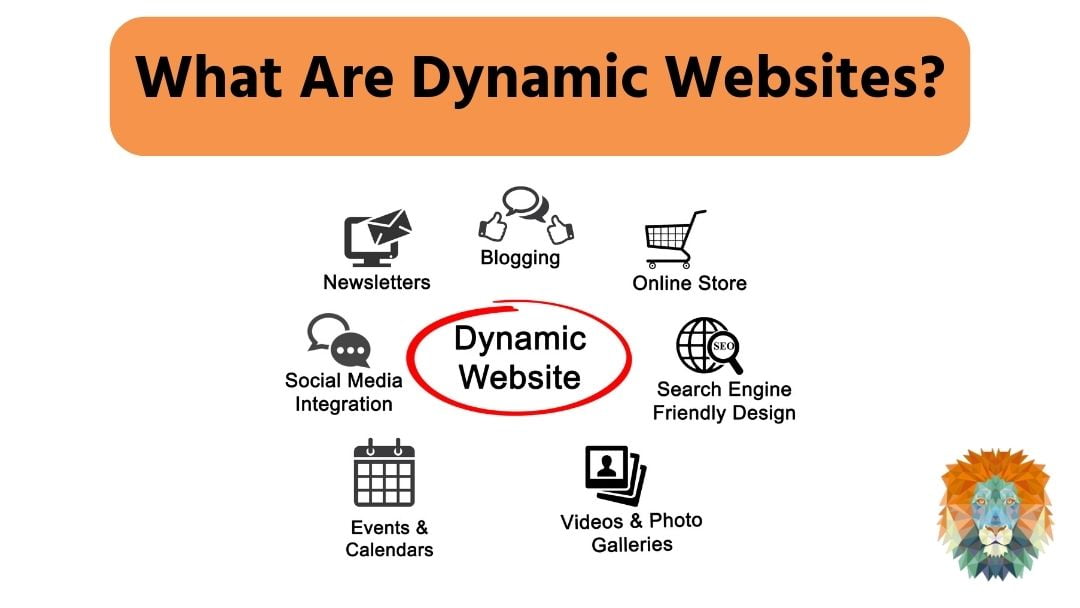You’ve probably noticed how some brands feel more like friendly neighbours than faceless corporations. That’s no accident—it’s community marketing at work. This modern approach moves beyond traditional advertising to create genuine connections between businesses and their audiences.
Instead of pushing one-way messages, companies now foster interactive relationships where customers become active participants in the brand’s story. While you might think this sounds like basic social media management, community marketing actually encompasses a much broader and more strategic approach that’s transforming how successful businesses operate in today’s connected world.
Let’s explore what makes this strategy so powerful.
Key Takeaways
- Community marketing is a strategy that builds meaningful relationships between brands and their audience through active engagement and participation.
- It focuses on creating dedicated spaces where customers can interact, share experiences, and develop emotional connections with brands.
- Brands use community marketing to gather customer insights, with 86% of Fortune 500 companies leveraging engagement to understand customer needs.
- The approach emphasises authentic two-way communication and user-generated content to foster trust and brand loyalty among community members.
- Community marketing drives organic growth through word-of-mouth promotion, with 72% of customers sharing positive experiences within their networks.
Defining Modern Community Marketing

In today’s digital age, community marketing has evolved far beyond traditional advertising to become a powerful strategy that builds meaningful relationships between brands and their audiences. Through active participation and relationship building on social media platforms, brands are creating spaces where customers can connect, share experiences, and engage with like-minded individuals.
Modern community marketing focuses on fostering a sense of belonging among your customers while driving community-led growth through meaningful interactions. When you implement this approach effectively, engaged community members naturally transform into brand ambassadors, promoting your products or services through authentic word-of-mouth recommendations.
The strategy emphasises customer collaboration, with data showing that 96% of companies now recognise its value for marketing initiatives.
You’ll find that successful community marketing relies on consistent two-way communication and valuable content creation. By nurturing these connections, you’re not just building brand loyalty; you’re creating a sustainable ecosystem where customers feel valued and heard.
This approach has proven particularly effective, with 80% of marketers reporting increased traffic from their community-building efforts, demonstrating the significant impact of this modern marketing strategy.
Benefits Beyond Traditional Marketing
The benefits of community marketing extend far beyond conventional advertising approaches, delivering measurable advantages that transform how businesses connect with their audiences.
You’ll find that brand visibility greatly improves through organic word-of-mouth promotion, with 80% of marketers reporting increased traffic from their brand community efforts. Fresh perspectives and innovative marketing strategies emerge when businesses actively engage with their communities, leading to more dynamic growth opportunities.
When you establish a vibrant brand community, you’ll gain valuable customer insights without the hefty price tag of traditional market research. Engaged community members freely share their thoughts and experiences, which 66% of companies leverage for product development and marketing strategies.
Through customer collaboration, you’re able to create more targeted campaigns, as confirmed by 71% of businesses that rely on community feedback.
The emotional connections fostered within your community strengthen customer loyalty and brand advocacy. In fact, 86% of Fortune 500 companies use community engagement to better understand customer needs, while 96% recognise its role in building trust.
You’ll discover that community marketing doesn’t just boost your bottom line—it creates lasting relationships that transform casual customers into passionate brand advocates who actively contribute to your company’s growth and success.
Building Strong Brand Communities

Building strong brand communities starts with creating meaningful connections that transcend traditional customer-business relationships. When you establish shared spaces for customers to interact, you’ll foster loyalty and trust through open communication.
Your community marketing strategy should focus on developing genuine relationships that encourage customers to share positive experiences and support one another. Marketing expertise from professional agencies can help optimise these community-building efforts through data-driven insights and strategic planning.
To build a thriving brand community, you’ll need to focus on key elements that drive engagement and create lasting connections:
- Create dedicated platforms where customers can interact, share experiences, and provide mutual support
- Align your brand values with social causes that matter to your community members
- Host regular events that bring community members together and strengthen shared identity
- Implement feedback mechanisms to guarantee your community stays relevant and responsive
Your brand community’s success depends on fostering emotional connections while maintaining professional engagement. When you prioritise shared identity and meaningful interactions, you’ll see increased customer loyalty and word-of-mouth marketing.
Research shows that 72% of customers actively share positive experiences, making strong communities a valuable asset in your marketing strategy. By consistently nurturing these relationships, you’ll create a sustainable ecosystem of engaged customers who support your brand’s growth.
Essential Community Marketing Tactics
Successful community marketing starts with building authentic connections through active participation in discussions and meaningful two-way communication with your audience.
You’ll find that creating dedicated spaces for interaction, whether through social media groups or community forums, enables your brand to foster genuine relationships while driving organic growth.
Building Authentic Brand Connections
Authentic brand connections thrive on three essential elements: meaningful two-way communication, consistent engagement, and genuine community empowerment.
Through effective community marketing strategies, you’ll establish emotional ties that transform customers into loyal brand advocates. Fortune 500 companies have proven that genuine two-way communication provides invaluable insights into customer needs and preferences.
To build lasting brand relationships, you’ll need to create dedicated spaces where your community can interact freely. These platforms enable authentic connections through user-generated content and testimonials, which naturally boost brand visibility.
Your feedback mechanisms should actively demonstrate how you’re implementing community suggestions, reinforcing trust and transparency in your brand relationships.
- Host regular events and discussions to foster a sense of belonging and encourage personal investment in your brand
- Leverage community-driven content to amplify your message through authentic peer recommendations
- Create dedicated online spaces where members can connect and share experiences
- Implement clear feedback loops to show your commitment to community input and continuous improvement
Drive Community-Led Growth
Harnessing community-led growth requires strategic engagement tactics that transform casual customers into passionate brand advocates. Research shows that 80% of marketers have experienced increased traffic through brand community building, making it a vital element of modern marketing strategies.
To drive effective community-led growth, you’ll need to identify and nurture shared missions among your members. This approach creates stronger emotional connections and enhances brand loyalty. By implementing interactive campaigns and events, you’ll encourage user-generated content while boosting community participation.
Fortune 500 companies demonstrate the value of this approach, with 86% gaining essential insights into customer needs through community interactions.
Your success in community marketing depends on maintaining consistent engagement and actively participating in discussions. This builds trust and improves customer retention rates while providing valuable feedback for product development.
You’ll want to focus on creating opportunities for meaningful interactions that resonate with your community members. By establishing a platform where customers can connect, share experiences, and contribute to your brand’s evolution, you’re not just building a community – you’re creating a sustainable growth engine for your business.
Measuring Community Marketing Success

Understanding your community marketing success starts with tracking key performance metrics, including member growth rates, engagement levels, and retention statistics.
You’ll want to monitor these metrics regularly through analytics tools and dashboard reports, allowing you to identify trends and adjust your strategy accordingly.
Key Performance Metrics
For successful community marketing, measuring the right metrics is essential to track progress and make data-driven decisions.
You’ll need to monitor engagement rates that capture likes, comments, and shares to understand community involvement levels. Member growth rate indicates how well your outreach efforts are attracting new participants, while retention rate shows your ability to keep members actively engaged over time.
Event attendance rates help you evaluate the success of your community initiatives and gauge participant interest. The Net Promoter Score (NPS) provides valuable insights into member satisfaction and their likelihood to recommend your community to others, reflecting overall community health and loyalty.
- Track engagement metrics through likes, comments, and shares to measure daily interaction levels
- Monitor member growth rate to assess the effectiveness of recruitment strategies
- Analyse retention rates to understand long-term community stability
- Measure event attendance to evaluate programme success and member interest
Engagement Growth Analysis
Building on these key performance metrics, successful engagement growth analysis requires a systematic approach to measuring and interpreting community marketing outcomes. You’ll need to track engagement metrics consistently, monitoring how your community activity evolves through comments, shares, and likes over time.
To conduct a thorough analysis, you’ll want to examine customer retention rates alongside participation rates in community initiatives. This data helps you understand how effectively you’re maintaining member engagement while attracting new participants.
Pay close attention to brand sentiment by analysing community discussions and feedback, as these insights reveal how your audience perceives your brand’s value and relevance.
Your analysis should also incorporate event attendance figures and Net Promoter Score measurements. These indicators help you gauge both immediate engagement levels and long-term loyalty and satisfaction within your community.
Future of Community Marketing
Through rapid technological advancement and evolving consumer expectations, the future of community marketing is undergoing a significant transformation.
You’ll need to embrace digital integration as brands shift towards more sophisticated online engagement strategies and data-driven approaches. AI-driven automation continues to reshape how brands analyse and respond to community behaviour, enabling more efficient campaign optimisation.
Consumer preferences are increasingly focused on sustainability and social responsibility, making these elements essential for your community-centric marketing initiatives.
The long-term impact of your community marketing efforts will depend on building authentic relationships through both digital and physical channels.
You’ll find success by partnering with local organisations and leveraging community engagement tools that provide deeper insights into your audience’s behaviours and needs.
- Digital platforms will become more sophisticated, offering enhanced analytics for measuring community engagement
- Sustainability initiatives will drive stronger connections between brands and environmentally conscious consumers
- Collaborative partnerships with local influencers will create more authentic community relationships
- Data-driven strategies will enable more personalised and effective community interactions
As you adapt to these changes, remember that community marketing success isn’t always immediately measurable.
Focus on building lasting relationships and maintaining consistent engagement with your community members.
Frequently Asked Questions
What Is Meant by Community Marketing?
Community marketing means you’re building authentic relationships with customers who share common interests in your brand. You’ll engage in two-way conversations, foster loyalty, and create spaces where your audience actively participates in brand discussions.
What Is Community-Based Marketing?
You’ll find community-based marketing creates spaces where your customers connect around shared interests, allowing them to engage with your brand naturally. It’s a strategy that builds loyalty through authentic customer interactions and relationships.
What Does a Community Marketer Do?
You’ll engage with your brand’s community through events, gather feedback, nurture relationships, and create authentic interactions. You’ll leverage user content and implement strategies based on community insights to foster loyalty and advocacy.
What Is the Objective of Community Marketing?
You’ll aim to build genuine relationships with customers through two-way conversations and shared values, transforming them into brand advocates who will promote your business organically while fostering loyalty and providing valuable consumer insights.
Conclusion
As you’ve discovered, community marketing isn’t just another promotional tactic—it’s a fundamental shift in how brands connect with their audiences. You’ll find that investing in community building yields long-term benefits through authentic engagement, stronger brand loyalty, and organic growth. By implementing the strategies discussed and staying adaptable to emerging trends, you’re well-positioned to create thriving communities that drive sustainable business success.
Have you noticed that your customers are wanting a bit more from you now? That your traditional marketing methods might not be as effective as they once were, and customers are looking for more unique contact. You’re not imagining it! Customers are demanding more interaction from their brands, more information and more open communication. And this has created a whole new type of marketing strategy – community marketing.
The main downside to community marketing is that it takes a unique skill set to get it right. While it might look simple on the surface, it can be challenging to understand the right approach to take, track the impact of communities, and how create the highly targeted messaging you need to make community marketing successful. But that doesn’t mean you shouldn’t do it! You just need some help.
At Lion Spirit Media we live and breathe marketing. We work closely with you to identify the best marketing strategies for your business and customers and help you put them in action. If you’d like to know more about how we run community marketing campaigns, please contact the team today.





0 Comments